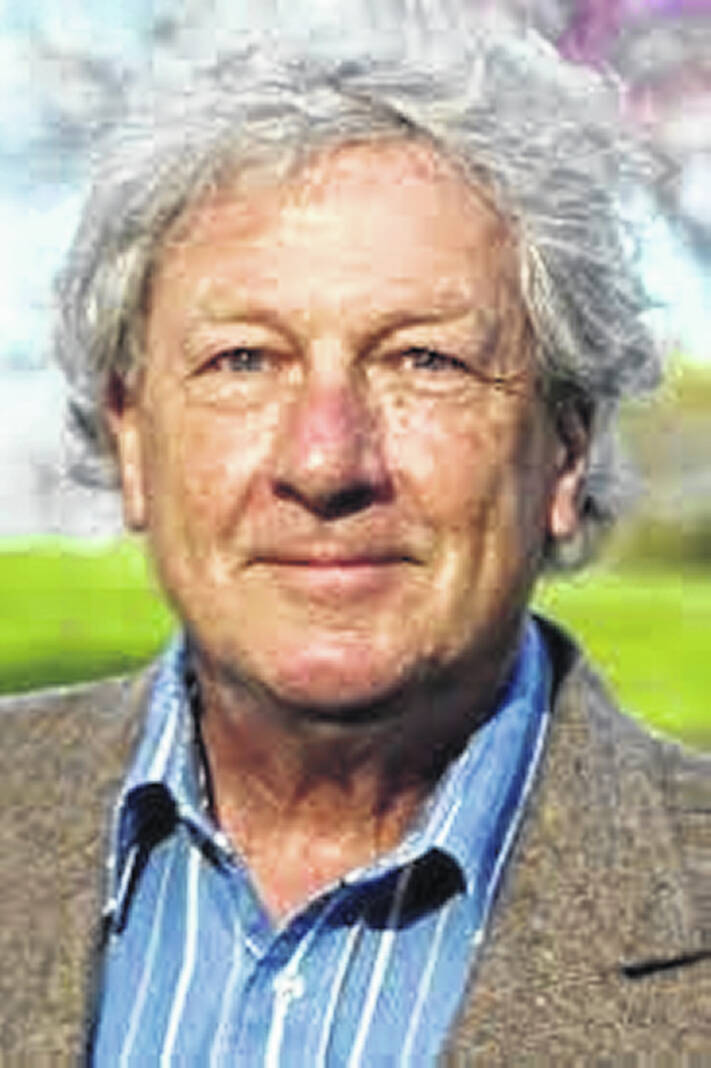
By Thomas K. Wolber
Contributing columnist
Another memorable concert of the Central Ohio Symphony took place on March 5 when renowned trombonist Peter Steiner performed the world premiere of the “UFO Concerto” by Dutch composer Johan de Meij. Originally written for euphonium and orchestra (hence the word play with “eupho”/“UFO”), it was substantially rewritten by the composer for the trombone, which offers a much broader palette of musical possibilities. The work comes in five thematically related movements, ranging from “Andante cantabile” to “Marcia,” “Giocoso,” and “Vivace.” This wide variety of styles and tempi allowed the soloist to shine in many different ways – honeyed and velvety in the slow movements and effortlessly virtuosic in the faster movements. After receiving a standing ovation from the smitten audience, he and the orchestra performed a brief encore – the familiar “Nessun dorma” tune from Giacomo Puccini’s opera “Turandot.” Steiner’s rendition of the aria was in every respect as sensual and soulful as the popular version sung by Luciano Pavarotti. The trombone version of “Oblivion,” a languorous work by composer Ástor Piazzolla, was unfortunately not used as an encore even though it had been announced on the Symphony’s Facebook page. However, you can easily find and access the short piece on YouTube.
The versatile soloist is clearly a wizard on the trombone and much in demand despite his young age of 31. He is currently on a five-month tour of the U.S., but his career has taken him to many European and Asian countries as well. During his sojourn in Ohio, Steiner also visited schools and colleges and gave a concert at Willow Brook at Delaware Run, accompanied by his partner Constanze Hochwartner on the piano. During intermission and following the concert, albums of Steiner’s work were available for sale in the lobby. If you want to hear more of him, many free pieces can be found on YouTube. Additional information can be located on his personal website, www.steinerpeter.com.
The evening actually began with the overture of Gioachino Rossini’s early opera “La gazza ladra” (“The Thieving Magpie”). The work, and thus the overture, is both serious and humorous. A young housemaid is accused of having stolen expensive silverware, found guilty, and sentenced to death. At the last minute, however, the true criminal is found – a thieving magpie. The work thus contains curious chiaroscuro effects, fluctuating between Mozartian light-heartedness and Beethovenian drama. The orchestra performed the 200-year-old work with precision and lucidity.
After intermission, the second suite from Manuel de Falla’s ballet “Three-Cornered Hat” was on the program, based on the eponymous novella by Pedro Antonio de Alarcón. It is a quintessential Spanish work that contains many folkloristic, dance-like elements. However, it is also a complex work of 20th-century modernity and thus not easy to perform. However, Music Director Jaime Morales-Matos and the orchestra were up to the task. The hours and hours of rigorous rehearsals paid off.
The final work was the orchestral version of the “Polovtsian Dances” from the opera “Prince Igor” by Russian composer Alexander Borodin. Igor and his son are captured by the Polovtsians – a savage, nomadic Tartar tribe consisting of fierce warriors. Their lively, colorful dances were intended by Borodin to depict an oriental or exotic culture. They, too, pose a serious challenge to conductors and orchestras. The rapturous ovation at the end was well deserved. The entire concert was recorded by OWU’s videographer Elaine Chun and is available on the Symphony’s website, www.centralohiosymphony.org.
A final note – although the concert program clearly states to “please silence cell phones and other electronic devices before the performance,” during the second half of the concert a patron’s alarm went off and would not stop. It is audible on the recorded video as well. The conductor, despite being visibly irritated, decided to ignore the distraction and to forge ahead with the remaining music. This reviewer has seen other conductors and soloists pause the music while tracking down and ending the source of noise. However, it is not easy to make that judgment call because any delay constitutes an interruption in and by itself that might exacerbate the situation.
The March 5 program was once again supported by the Ohio Arts Council, PNC Arts Alive, the City of Delaware, and Ohio Wesleyan University. A shuttle service was provided through a special grant from SourcePoint.
The final concert of the 44th Season will take place on Sunday, May 7. On the program are the “Nightsongs” by African-American composer H. Leslie Adams (with local soprano Angel V. Tyler as soloist), the “Timpani Concerto” by Phillip Glass, and Ludwig van Beethoven’s Seventh Symphony.
Ensuring diversity and engaging the community are core tenets of the Symphony. The 2022-23 season proves once again that the organization takes its principles seriously and makes every effort to remain vibrant and relevant.
Local resident Thomas K. Wolber, Ph.D., taught foreign languages and literatures at Ohio Wesleyan University for over 30 years. He is now retired. Wolber has an undergraduate degree in music from a German university, plays the piano, and is passionate about classical music. His email address is [email protected].

